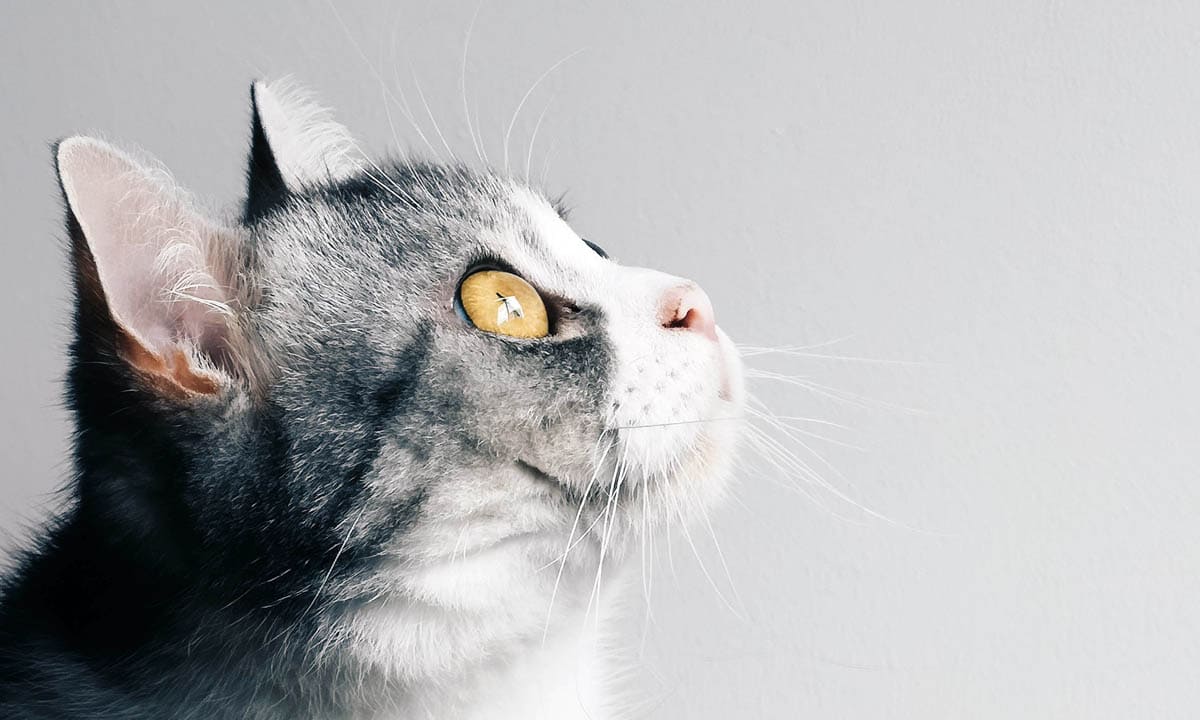What is wheezing?
Wheezing is the abnormal whistling sound that accompanies breathing, caused by a narrowing of the airways due to a partial blockage, constriction or inflammation.
Causes
Asthma
Feline asthma is usually the result of inhaled allergies which trigger an immune response, leading to constriction of the airways. Common allergens include dust, pollen, and moulds, but any airborne particle can potentially result in asthma. Cold weather often makes the condition worse due to the dryness in the air. Common symptoms of asthma are coughing, wheezing and difficulty breathing.
Asthma attacks can be fatal, therefore avoiding the triggers, if known, should be the first line of defence if possible. Any cat suspected of having an asthma attack should see a veterinarian immediately.
Treatment
Oral or inhaled steroids to reduce inflammation and bronchodilators to open up the airways. Increasing humidity, especially in the cooler months can also help.
Upper respiratory infection
Cat flu is caused primarily by the feline herpes virus, calicivirus, reovirus. It is similar to colds and flu in humans with typical symptoms being a runny nose, sneezing, fever, eye discharge. The airways can become inflamed leading to wheezing.
Treatment:
Supportive care such as fluids, encouraging your cat to eat. Antibiotics to prevent or treat bacterial infection.
Heartworm
Parasitic worms which live in the heart, pulmonary arteries and lungs of cats that are transmitted by mosquitoes. Symptoms of heartworm infection include coughing, wheezing, shortness of breath, lethargy, anorexia and in some cases, death.
Treatment:
There are no approved medications for heartworm at this time and treatment can be risky. In mild cases, your vet may decide to wait for the parasite to be cleared. Severe cases will require supportive care such as bronchodilators, oxygen, and prednisone to reduce inflammation. Adulticide treatment may be necessary for cats who fail to respond to the above therapies. This comes with the risk of the dead worms dislodging and causing a pulmonary embolism. Confinement is necessary while this treatment is underway.
Lungworm infection
Slim, hair-like worms acquired by consuming hosts (such as snails) infected with the worm or contaminated food and water. They reside in the lungs of cats, laying their eggs which hatch into larvae (L1), that are coughed up, swallowed and passed out of the body via the feces. Lungworm larvae in the airways can cause irritation, inflammation, and mucus resulting in coughing and wheezing.
Treatment:
Anti-parasitic medication such as fenbendazole, ivermectin, levamisole, and praziquantel.
Hairballs
As the cat grooms, he ingests small amounts of hair. This usually passes through the body and out, via the feces without incident. However, in some cats hair can build up inside your cat resulting in him eventually either coughing up the hairball or becoming blocked.
Treatment:
Increase fibre in the diet and/or give lubricants (such as butter or petroleum jelly) to help with the passage of the hairball. Regular grooming to reduce the amount of fur your cat ingests and in some cases, your cat may need to go on a hairball diet.
Anaphylaxis
A life-threatening allergic reaction due to a narrowing of the airways. Almost anything can trigger anaphylaxis; common causes include insect bites, medications, and food allergies. Symptoms of anaphylaxis include wheezing, difficulty breathing, rash, swelling, pale gums, collapse. Urgent veterinary care is vital.
Treatment:
Adrenaline to counteract the effects of the body’s immune response. Supportive care such as oxygen and IV fluids may also be necessary.
Airway obstruction
Aside from many of the conditions listed above which can obstruct the airways (such as asthma, hairballs, worms etc.) swallowed objects can also lead to an obstruction, common items may include bone, food, toys etc., leading to difficulty breathing, wheezing, gagging, loss of consciousness.
Treatment:
Heimlich maneuver, in which force is applied to the cat’s abdomen in order to dislodge the object.
Diagnosis
If possible, bring along a recording of your cat wheezing as this can help your veterinarian narrow down a cause. During the examination, the veterinarian will perform a complete physical examination of your cat and obtain a history from you including other symptoms you may have noticed. Your veterinarian will be able to narrow down the cause depending on presenting symptoms. A cat with an upper respiratory tract infection will usually have nasal discharge, coughing, sneezing, and fever. A cat suffering from allergies will have an itchy face and neck. He may want to run some tests to determine the exact cause.
Diagnostic workup:
- Ultrasound and/or chest x-ray: Worms in the heart or lungs, signs of inflammation, flattened diaphragm and doughnuts.
- Fecal flotation: Eggs in the feces.
- Tracheal wash: Eggs or larvae or signs of inflammation.
- Antigen, antibody or microfilariae tests: Heartworm larvae or antibodies.
- Skin patch test: This involves introducing common allergens to the cat’s skin via small needles. The area is then checked for signs of an allergic reaction.
- Complete blood count: This may reveal higher numbers of eosinophils (a type of white blood cell), which can suggest asthma or allergies.

